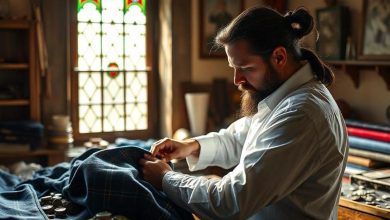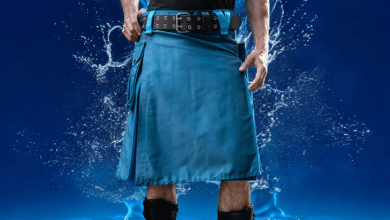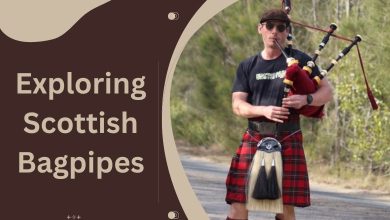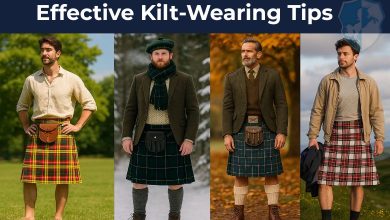Traditional Kilts vs. Leather Kilts: Which is Better
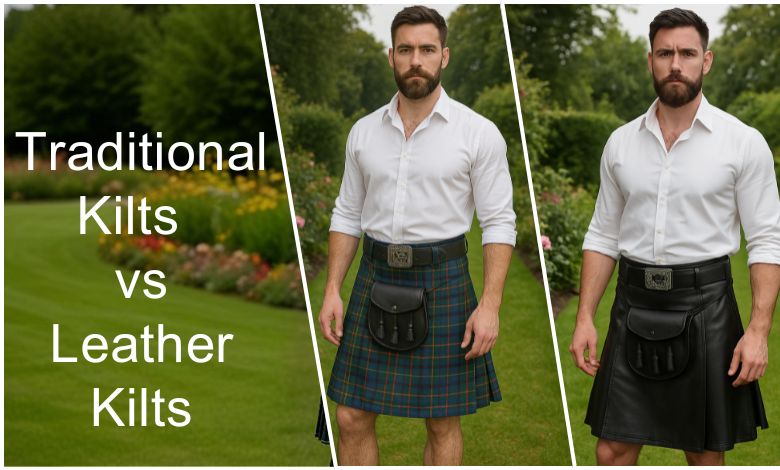
Once made with tartan only, kilts are also made with synthetic materials now. Involvement of various fabrics results in different kilt variations. Two prominent names among them are traditional or tartan kilt and leather kilt. This discussion aims to narrate traditional kilts vs. leather kilts. But before we talk about their differences, let us have their introduction.
Table of Contents
ToggleWhat Are Traditional Kilts?

Traditional kilts are woven with a specific fabric called tartan. This is the reason for their identity as tartan kilts. Its first form was the great kilt but now traditional garments have become modernized. Traditional apparels sit at the natural waistline of the wearer and fall to the kneecap.
Every pattern these kilts have describes the story of Scotland and the clan’s living there. The Royal Stewart Tartan Kilts represents the Stewart clan. On the other hand, Night Watch Tartan is for royal identity.
What Are Leather Kilts?

As the name represents leather kilts are made with leather, while the type of leather can vary. Today everyone without gender limits can wear kilts but leather kilts were specified for men at the time of invention just like traditional kilts. Invented after traditional kilts, these kilts are modern ones and specific for formal occasions. They have some unique properties differentiating them from traditional kilts.
Traditional Kilts vs. Leather Kilts

When we go for the comparison of leather kilts with traditional tartan kilts, we find several differences setting them apart from each other. These kilts for men are historically different from each other. You can recognize them from their appearance, similarly, the history is not the same at all. Let us move to the comparison of these apparels.
Fabric Varies
The primary thing that helps us to identify their difference is their fabric. Both of these kilts are made with different fabrics. It’s time to have an overview of fabric differences!
Traditional Kilt: The first form of kilt was made with wool initially and it continues till the date. Many types of wool make tartan while polyviscose and acrylic wool are the most common ones. Remember, every fabric variation has distinctive features making kilts suitable for different climates as well as seasons.
Leather Kilts: If we talk about leather kilts, they are primarily made with animal hides. The makers clean, tan, and then finish the process. Leather quality depends on the hide of the animals whether it is made with cowhide or lamb hide. Cowhide is the most common. Kind of animal hide also impacts the appearance of leather.
Versatility in Design and Aesthetic
The next aspect that sets them apart is dissimilarity in design with exposed aesthetics. It’s time to prove our statement right here.
Traditional Kilt: Regarding the visuals of traditional kilts, we mostly find them almost the same. Usually, these kilts have simple back pleats, belt loops on the waistband, and fastening straps at the side.
Let us explain our point with examples of products. The first product is Gordon Stewart Tartan Kilts while the other one is Night Watch Tartan Kilt. We could not find any dissimilarity other than color and patterns.
Leather Kilts: Kilts made with leather fabric on the other hand are versatile in appearance. They are available in different designs having different levels of hardware attached to them. At TheUtilityKilt, we have a large number of leather kilts, let us take just 2 products to explain their aesthetic differences.
The first one is Pleated Design Modern Black Leather Kilt which is a stylish kilt. It has large pockets on both sides and a significant buckle strap at the waistline. The apron has a zip closure. The other product is a Brown Leather Kilt with a plain apron and buttoned waistline.
Comfort and Fit
The comfort level with the size of these kilt variations also differentiates them. Both kilt types have a different fit while the comfort level also does not match with each other. Below are some of their coziness and size characteristics:
Traditional Kilts: Made with wool, traditional kilts aim to provide comfort with durability. Different types of wool, including worsted and acrylic, are used to make tartan kilts. The softness that wool provides ensures a high level of comfort with breathability.
Leather Kilts: The nature of leather is to be less comfortable than traditional wool-made kilts in Scotland. Every leather type offers a different level of comfort but no one can compete with a traditional kilt. If you need extensive comfort from leather kilts you will have to spend much more than a standard kilt.
Cultural and Social Considerations
Traditional and societal factors also make them different from each other. Traditional kilts serve as clan identity while the story with leather kilts varies a little.
Traditional Kilts: Traditional kilts are made with tartan fabric which was the first garment used to make kilts. Different patterns of each tartan have a connection with the ancestors of wearers. Scots wear this kilt to admire their clan as well as their history.
Leather Kilts: Just like traditional kilts, those made with leather have cultural significance but just because it is a kilt. However, leather apparel is a fashion statement at primary. That’s why the majority uses it in formal events for durability, remarkable appearance, and to leave an impression.
Pricing and Accessibility
While comparing two major kilt variations, ignoring the price and their accessibility will be unfair. Therefore, both of these aspects are equally important, so we must bring them to light here.
Traditional Kilts: Pricing and availability of tartan kilts depend on each other. The higher the prices, the lower the accessibility. Woolen kilts are usually lower priced which is why everyone can afford them.
Leather Kilts: These kilts are a bit less accessible and the reason behind it is their high pricing factor. Prices of leather-made kilts are usually double that of tartan or traditional kilts.
Comparison Table
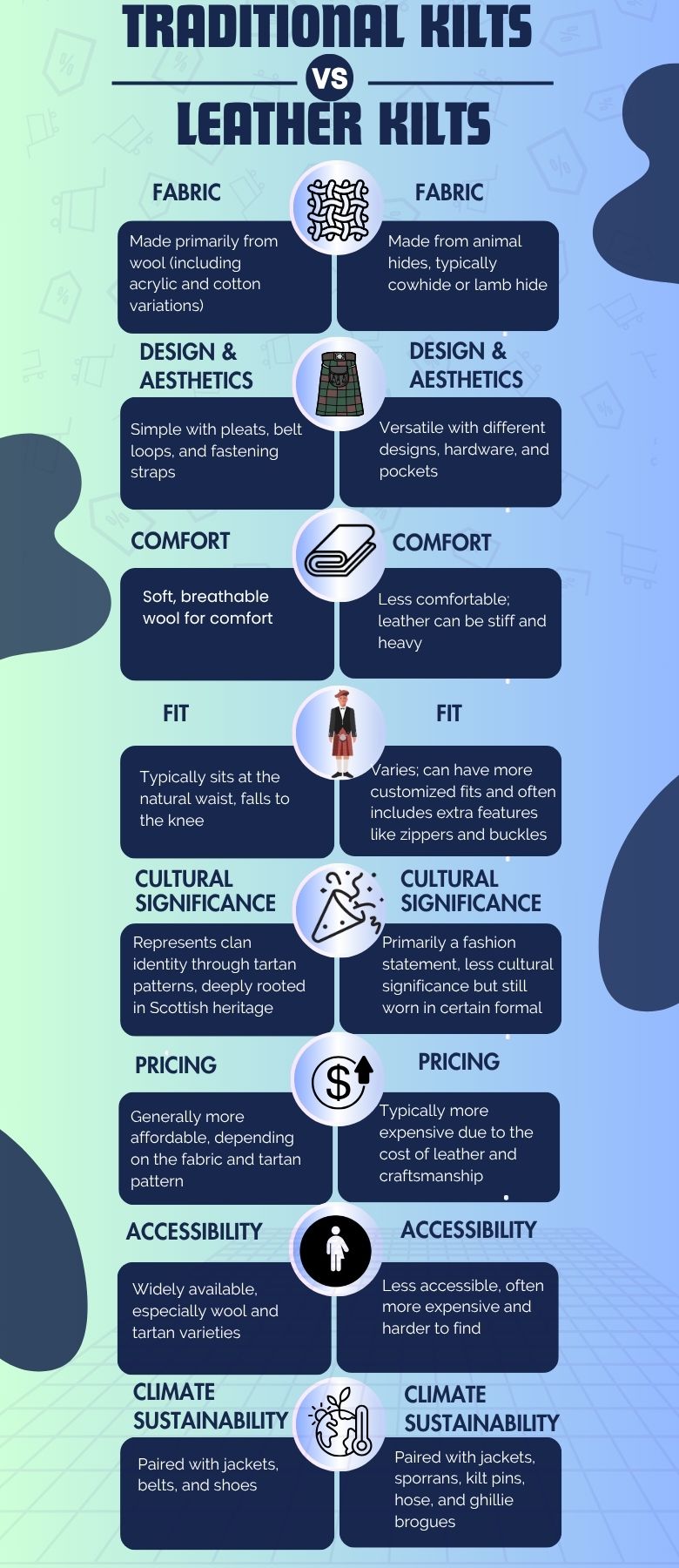
| Aspect | Traditional Kilts | Leather Kilts |
| Fabric | Made primarily from wool (including acrylic and cotton variations) | Made from animal hides, typically cowhide or lamb hide |
| Design & Aesthetics | Simple with pleats, belt loops, and fastening straps | Versatile with different designs, hardware, and pockets |
| Comfort | Soft, breathable wool for comfort | Less comfortable; leather can be stiff and heavy |
| Fit | Typically sits at the natural waist, falls to the knee | Varies; can have more customized fits and often includes extra features like zippers and buckles |
| Cultural Significance | Represents clan identity through tartan patterns, deeply rooted in Scottish heritage | Primarily a fashion statement, less cultural significance but still worn in certain formal settings |
| Pricing | Generally more affordable, depending on the fabric and tartan pattern | Typically more expensive due to the cost of leather and craftsmanship |
| Accessibility | Widely available, especially wool and tartan varieties | Less accessible, often more expensive and harder to find |
| Climate Sustainability | Suitable for cooler climates due to the wool material | Better for harsher conditions because of the durability of leather |
| Occasions | Perfect for traditional events like weddings, Highland games, and other cultural celebrations | Best suited for informal, modern events and formal gatherings |
Which is Better?
Now that you are aware of the different characteristics of both kilt types, it’s time to see which is better among them. This factor relies on your choice including requirements. If you want a kilt for a traditional event, you must go with a tartan kilt. In case the requirement is for an informal event, a leather kilt might be a good choice. Similarly, this variation also performs well in harsh conditions because of its stiffness.
Get in Touch With TUK Store for Your Next Kilt
No matter what kilt type you need, your primary focus should be premium quality with customization, affordable prices, and an exceptional return policy of the store. We believe you would not find someone better than the The Utility Kilt Store to cover all of these aspects. So, what are you waiting for, choose your kilt and order now!
